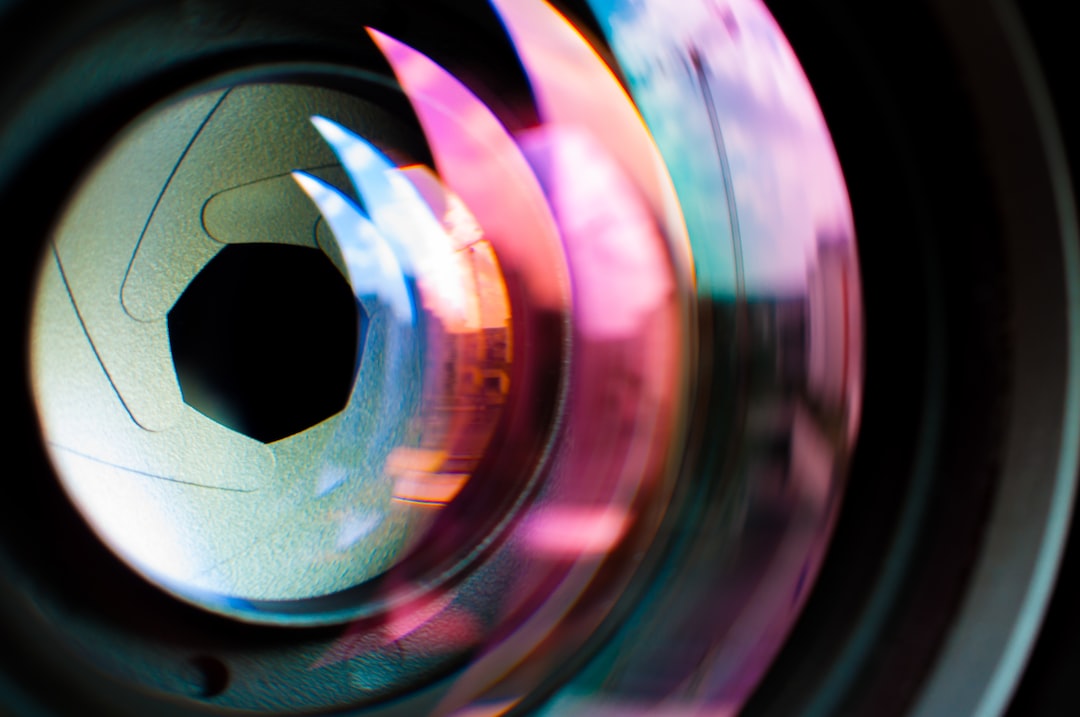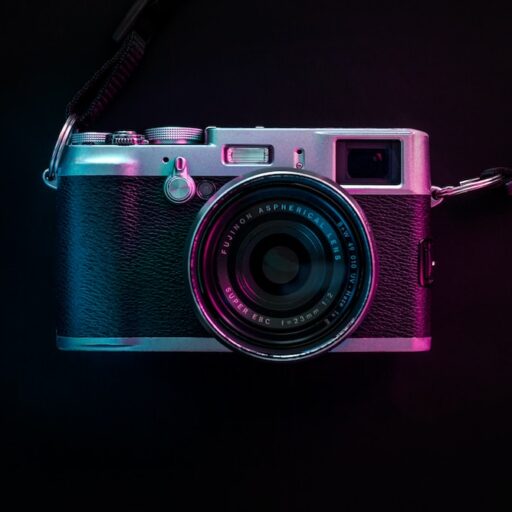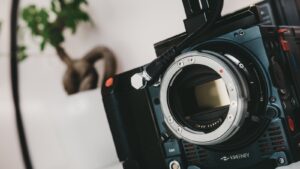Support our educational content for free when you purchase through links on our site. Learn more
How Many Megapixels is the Best Camera? [2024]
Have you ever wondered how many megapixels the best camera has? In a world where technology is constantly evolving, it can be challenging to keep up with the latest advancements in photography. In this article, we will delve into the world of megapixels and explore what makes a camera truly exceptional. So, grab your lens cap and let’s dive in!
Table of Contents
- Quick Answer
- Quick Tips and Facts
- Background: The Evolution of Megapixels
- What Determines the Best Camera?
- Different Types of High Megapixel Cameras
- Applications of High Megapixel Cameras
- Factors Affecting Camera Quality
- FAQ
- Conclusion
- Recommended Links
- Reference Links
Quick Answer
The best camera is not solely determined by the number of megapixels it possesses. While higher megapixels can result in more detailed images, other factors such as sensor size, lens quality, and image processing capabilities also play a crucial role in determining the overall image quality. Therefore, it is essential to consider a camera’s specifications as a whole rather than focusing solely on megapixels.
✅ Quick Tip: When shopping for a camera, consider your specific needs and use cases to determine the best camera for you. Megapixels are just one piece of the puzzle.
Shop Cameras on: Amazon | Walmart | eBay
Quick Tips and Facts
Before we dive deeper into the world of megapixels, here are some quick tips and interesting facts to keep in mind:
- Megapixels refer to the number of pixels (individual dots of color) a camera’s sensor can capture.
- Higher megapixels can result in more detailed images, especially when printing or zooming in.
- The human eye has an estimated resolution equivalent to around 576 megapixels, far surpassing even the highest-resolution digital cameras available today.
- Professional cameras typically range from 10 to 50 megapixels, with some specialized cameras offering even higher resolutions.
- The highest megapixel camera in a phone currently available is the Samsung S23 Ultra, boasting an impressive 200MP camera.
Background: The Evolution of Megapixels

To understand the significance of megapixels in modern cameras, let’s take a brief look at their evolution. In the early days of digital photography, cameras had relatively low megapixel counts, often ranging from 1 to 3 megapixels. These cameras were suitable for basic snapshots but lacked the detail required for professional photography.
As technology advanced, camera manufacturers began increasing the megapixel count in their devices. This allowed for higher-resolution images and greater flexibility in post-processing. Today, cameras with resolutions ranging from 20 to 100 megapixels are readily available, catering to the needs of both professionals and enthusiasts.
What Determines the Best Camera?
While megapixels are an essential factor to consider when evaluating a camera’s image quality, they are not the sole determinant of what makes a camera the best. Several other factors contribute to the overall performance and image quality of a camera. Let’s explore some of these factors:
-
Sensor Size: The size of a camera’s sensor plays a crucial role in capturing light and producing high-quality images. Larger sensors generally perform better in low-light conditions and offer improved dynamic range.
-
Lens Quality: The quality of the lens attached to a camera significantly impacts image sharpness, clarity, and overall optical performance. A high-quality lens can make a substantial difference in the final image quality.
-
Image Processing: The image processing capabilities of a camera, including the algorithms used to process raw image data, can greatly affect the final image quality. Advanced image processing technologies can enhance details, reduce noise, and improve overall image sharpness.
-
ISO Performance: The camera’s ISO range and its ability to handle noise at higher ISO settings are crucial factors to consider, especially in low-light situations. Cameras with excellent ISO performance can produce cleaner images with minimal noise.
-
Dynamic Range: The dynamic range refers to the camera’s ability to capture details in both bright and dark areas of a scene. Cameras with a wider dynamic range can retain more details in challenging lighting conditions.
-
Autofocus System: The autofocus system of a camera determines how quickly and accurately it can focus on subjects. A fast and reliable autofocus system is essential, especially for capturing fast-moving subjects or in challenging shooting conditions.
By considering these factors in conjunction with megapixels, you can make an informed decision when choosing the best camera for your needs.
Different Types of High Megapixel Cameras
High megapixel cameras come in various forms, each catering to specific photography needs. Let’s explore some of the different types:
-
DSLR Cameras: DSLR cameras are popular among professional photographers and enthusiasts alike. They typically range from 10 to 50 megapixels, with higher options available for capturing intricate details.
-
Mirrorless Cameras: Mirrorless cameras have gained significant popularity in recent years due to their compact size and advanced features. They offer a wide range of megapixel options, catering to different photography needs.
-
Medium Format Cameras: Medium format cameras are known for their exceptional image quality and larger sensors. These cameras often boast resolutions exceeding 50 megapixels, making them ideal for professional studio work and landscape photography.
-
Smartphone Cameras: Smartphone cameras have come a long way in terms of image quality. Some flagship smartphones now offer cameras with resolutions up to 200 megapixels, allowing for detailed and vibrant images on the go.
Shop DSLR Cameras on: Amazon | Walmart | eBay
Shop Mirrorless Cameras on: Amazon | Walmart | eBay
Shop Medium Format Cameras on: Amazon | Walmart | eBay
Shop Smartphone Cameras on: Amazon | Walmart | eBay
Applications of High Megapixel Cameras
High megapixel cameras find applications in various fields, catering to different photography and videography needs. Here are some common applications:
-
Professional Photography: Professional photographers often require high megapixel cameras to capture intricate details in subjects such as wildlife, weddings, portraits, and fashion photography.
-
Filmmaking: Filmmakers and videographers prefer higher resolutions like 4K and 8K for detailed shots and post-production flexibility.
-
Drone Photography: Drones equipped with high megapixel cameras are essential for capturing clear videos and images from significant heights, providing stunning aerial perspectives.
-
Product Photography: High megapixels are necessary for presenting products in a captivating way, allowing for detailed close-ups and showcasing intricate textures.
-
Print Images: High megapixels ensure image quality is maintained when printing large-sized photographs or artwork.
Factors Affecting Camera Quality
While megapixels play a significant role in determining image quality, several other factors can affect the overall camera quality. Let’s explore some of these factors:
-
Sensor Size: Larger sensors generally offer better image quality, especially in low-light conditions, by capturing more light and reducing noise.
-
Lens Quality: The quality of the lens attached to the camera impacts image sharpness, clarity, and overall optical performance. High-quality lenses can significantly enhance image quality.
-
Image Stabilization: Cameras with effective image stabilization mechanisms can compensate for camera shake, resulting in sharper images, especially in low-light situations or when using longer focal lengths.
-
Dynamic Range: The dynamic range of a camera determines its ability to capture details in both bright and dark areas of a scene. Cameras with a wider dynamic range can produce more balanced and detailed images.
-
ISO Performance: The camera’s ISO range and its ability to handle noise at higher ISO settings are crucial factors, especially in low-light situations. Cameras with excellent ISO performance can produce cleaner images with minimal noise.
-
Image Processing: The camera’s image processing capabilities, including noise reduction algorithms and color reproduction, can significantly impact the final image quality. Advanced image processing technologies can enhance details and reduce noise.
Considering these factors alongside megapixels will help you make an informed decision when choosing a camera that suits your specific needs.
FAQ

How many megapixels is a good camera?
A good camera can have a wide range of megapixels, depending on your specific needs. Professional cameras typically range from 10 to 50 megapixels, offering excellent image quality for various photography genres.
What is the highest megapixel camera?
As of now, the highest megapixel camera available is the Samsung S23 Ultra smartphone, boasting an impressive 200MP camera. However, it’s important to note that megapixels alone do not determine the overall image quality.
Read more about “Is 4K the Best Camera Quality? …”
Is 100 megapixels good for a camera?
Yes, a 100-megapixel camera can produce exceptional image quality, especially when combined with other factors such as sensor size, lens quality, and image processing capabilities. However, it’s essential to consider your specific needs and use cases when choosing a camera.
Read more about “The Best Camera for Beginners in 2024: A Comprehensive Guide”
Is a 200-megapixel camera good?
A 200-megapixel camera can capture incredibly detailed images, but it’s important to note that higher megapixels alone do not guarantee superior image quality. Factors such as sensor size, lens quality, and image processing capabilities also play a crucial role.
Conclusion

In conclusion, when determining the best camera, it’s important to consider more than just the number of megapixels. While higher megapixels can result in more detailed images, factors such as sensor size, lens quality, image processing capabilities, and overall camera performance also contribute to the final image quality. By considering these factors in conjunction with megapixels, you can make an informed decision when choosing the best camera for your specific needs.
Recommended Links
- Camera Brands
- Camera Buying Guide
- Camera Reviews
- Camera Comparisons
- Is 4K the Best Camera Quality? 2024
Reference Links
Remember, the best camera is not solely determined by the number of megapixels it possesses. Consider your specific needs, evaluate the camera’s overall specifications, and make an informed decision. Happy shooting!


